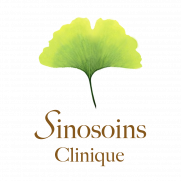Understanding the basic characteristics of Traditional Chinese Medicine (TCM)
Sept 1, 2020
The concept of the organism as a whole
The human body itself is an organic whole and has close relations with the external surroundings. The concept of the human body as well as the relation between the body and the outside world is known as that of an organic whole.
Unity within the body
This concept stems from the belief that the components parts of the human body are inseparable from each other. The human body is made up of viscera, bowels, tissues and other organs. Each of them has its own physiological functions which determines the unity within the body.
For example, TCM believes that the heart has its specific opening in the tongue and the physiological changes of the heart can be known by observing the tongue. Pale tongue indicates blood deficiency of the heart.
Unity between the human body and nature
The human body is directly and indirectly influenced by the movements and changes in nature as we live in harmony with nature. The occurrence and development of many diseases are seasonal. Some examples include epidemic febrile diseases during spring, sunstrokes during summer, cold-stroke syndromes during winter…TCM physicians have observed that during certain time of the day, a disease may become severer or milder. This is because in the morning the vital energy of the human body is stronger while pathogenic factors are weaker. In the afternoon, the vital energy of the human body becomes weaker.
TCM also believes that different geographical surroundings influence the human body. For instance, people who live in the high areas have a longer life than those who live in the low areas. Modern findings also have shown that areas between 1500 and 2000 metres above sea level are ideal for long life because hydrogen anions are concentrated in these areas.
Diagnosis based on observations and analysis of signs and symptoms
TCM’s diagnosis and treatment is through analysing the signs and symptoms collected through the four methods of diagnosis (observation, listening/smelling, inquiring, pulse feeling and palpation) to find the cause and nature of the disease.
